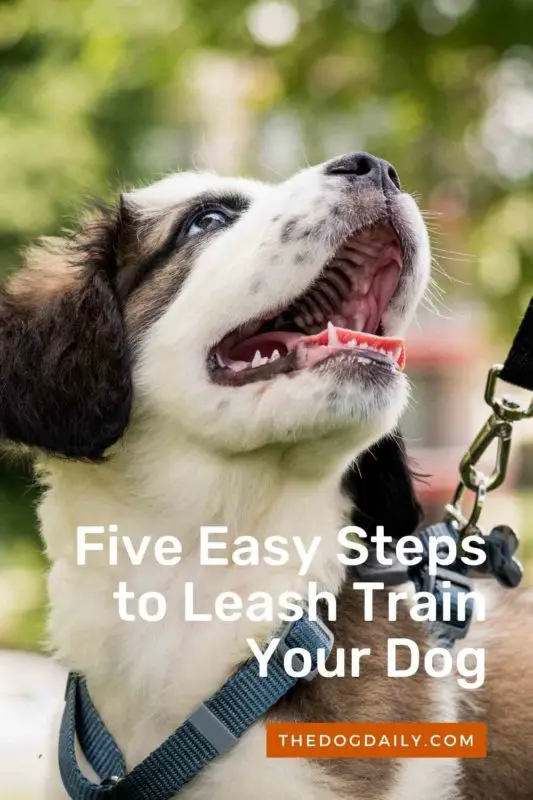Leash Training a Dog
Dogs are gifted with enthusiasm — a good trait if you and your pet are playing fetch in a field. On the other hand, it can be a potentially dangerous trait if you’re strolling along a busy sidewalk. An untethered animal poses many risks: It could jump on strangers, get into fights with other dogs, or run into oncoming traffic. That’s why leash training is so essential. Leash training should begin as soon as you get your dog, regardless of its age. In fact, in many areas, leashes are required by law.
Authors of the Handbook of Behavior Problems of the Dog and Cat (Butterworth Heinemann) offer the following advice when beginning to leash train your dog.
- Be patient. Dogs, like people, learn at different rates. Some dogs may take weeks and even months of patient training before learning how to heel on command entirely.
- Young dogs usually take well to wearing a collar and leash, though temperament and energy level can influence how quickly they learn.
- Some breeds, such as Beagles and Dachshunds, often require more intense training because they are very easily distracted. This isn’t to suggest that a dog is less intelligent if it doesn’t calmly walk at its owner’s side after a week of training, only that it may require a more extended learning period.
- Older dogs may take a little longer to get used to a collar and leash, especially if they haven’t had leash training before.
Five Easy Steps to Leash Train Your Dog
1. Begin by placing the collar and leash on your dog while it eats, letting the leash hang loosely by its side. Doing so allows your dog to associate the leash with something pleasant (food) and helps it get used to having a collar around its neck.
2. After two or three days, take the leash in your hand and follow your dog around the house for a few minutes after it has finished eating. Do this for more extended periods until your dog is used to both the leash and having you walk beside it.
3. Next, go outside and let your dog drag the leash around, occasionally picking up the leash and following it. Offer a treat while showing the leash.
4. While walking, hold the leash in your right hand and coax your dog along your left side by holding a treat in your left hand. As you walk, repeat the phrase, “Let’s go!” Praise your dog when it does well.
5. If your dog starts to pull forward, do a clockwise turn and walk in another direction; the leash will pull its head to the side, so it will have to hurry to catch up with you. Repeat this exercise until your dog learns that if it wants to walk beside you and receive your praise, it’ll have to stay by your side.
Expert Advice on Leash Training
Make sure your dog’s leash isn’t too long. Four to six feet is ideal. Conduct your outdoor training sessions in an area with few distractions, such as your backyard or a quiet park. If your dog is overly excited, tire it out a little with some vigorous play before placing it on the leash. A slightly tired dog is more attentive. And never yell at or strike your dog while training. Patience pays!
Proper Training Equipment
Using the right kind of leash and collar can help make your training successful. Most pet supply stores carry a wide selection. Here are the most common types of leashes and collars.
-
Flat leash and buckle collar
These standard leashes are available in leather, nylon, and metal chain of various lengths.
-
Retractable leash
Much like a fishing pole, this leash lets your pet wander up to 20 feet ahead while still under your control. Pushing the button takes up the slack. (Not a good choice when teaching to “heel.”)
-
Headcollar
This unique collar, attached to a leash, keeps your dog under gentle control with a loop around the mouth as well as a collar around the neck. It doesn’t restrict the mouth, and it thwarts lunging by transferring the forward motion into a sideways head turn. This type of lead is beneficial on energetic or difficult-to-control dogs.
-
Choke and prong collars
When attached to leads, these collars control dogs by tightening around the neck or jabbing the throat with spikes. You pinch and release for the corrective action and quick attention — not to choke the dog. They’re not for novice handlers and can be dangerous in inexperienced hands. Before you use this technique, check with an expert for instructions.
With a lot of patience and a little bit of time, you can leash-train your dog and keep it safe and sound no matter where you go.
Article written by Author: Mary Kirkland

